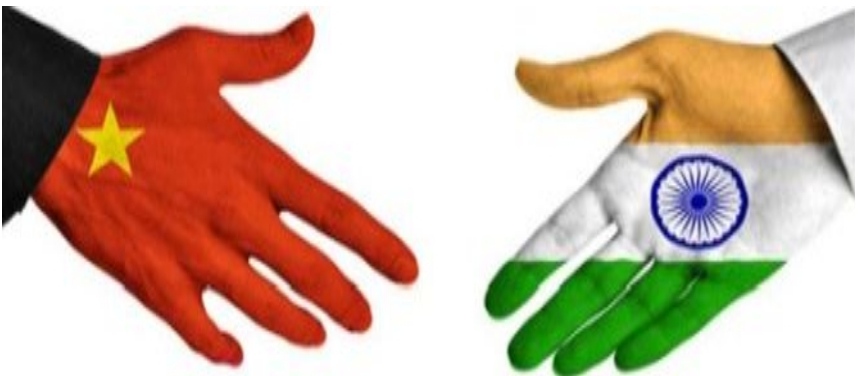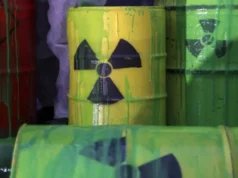Rethinking India’s Economic Policy Towards Vietnam

By
Kannan Reghunathan Nair
Since the upgrade of bilateral relations to a ‘Comprehensive Strategic Partnership’ in 2016, India–Vietnam strategic coordination has continued to deepen — as reflected through increased defence and maritime security cooperation. But New Delhi and Hanoi’s economic ties are lagging behind, limiting their ability to address shared security and strategic concerns raised by China’s economic rise in India’s backyard and maritime assertiveness in the South China Sea.
Vietnam’s efforts to accelerate integration into the global market presents ample opportunities for India–Vietnam economic cooperation. In 2019, Vietnam signed a landmark Free Trade Agreement (FTA) and Investment Protection Agreement with the European Union. Vietnam is also a member of the Comprehensive and Progressive Agreement for Trans-Pacific Partnership (CPTPP), the signing and negotiation of which Hanoi actively facilitated. During Vietnam’s 2020 ASEAN Chairmanship, the 10 ASEAN member states inked the Regional Comprehensive Economic Partnership (RCEP) — the world’s largest trade free-trade pact.
Part of the reason why Vietnam seeks to diversify its trade and investment profile is to reduce its economic dependence on China. China is Vietnam’s biggest trading partner with import–export turnover reaching US$133 billion in 2020. Beijing is also Hanoi’s top foreign investor with total investment capital of US$2.4 billion as of November 2020. At the same time, the two countries have long been embroiled in territorial and maritime disputes in the South China Sea.
Growing anti-China sentiments fuelled by tensions in the South China Sea and the strategic implications of overdependence on China have pushed Hanoi to reach out to alternative economic partners, including India. In a recent meeting with the Indian Ambassador to Vietnam, Pranay Verma, Vietnamese President Nguyen Xuan Phuc encouraged India to welcome imports of Vietnamese agricultural products and to boost investment in Vietnam.
But Vietnam’s bilateral trade figures with India accounted for only US$11.1 billion in the 2020–21 financial year — 12 times smaller than that with China. India’s imports from Vietnam increased from US$2.5 billion in 2015–16 to US$6.1 billion in 2020–21, but the growth rate is trifling in contrast with Hanoi’s trade ties with key ASEAN countries. Conversely, Indian exports to Vietnam have not show consistent growth in the last five years, reaching only US$5 billion in 2020–21.
The magnitude of Indian investment in Vietnam falls behind that of investments from not just China but also other Asian countries like Japan, South Korea and Singapore. Protectionism is also on the rise in India, hindering the prospect of greater economic ties. India is not party to the CPTPP and withdrew from RCEP at the last minute due to concerns over its trade deficit with other RCEP countries.
Meanwhile, through its own institutions — notably the Belt and Road Initiative and the Lancang–Mekong Cooperation — Beijing has strengthened its economic presence not just in Vietnam but also in the wider Mekong region.
Through these mechanisms, China consolidates its dominant position as the chief provider of economic goods for the region. This could undermine India and Vietnam’s shared strategic vision of a rules-based South China Sea.
Increasingly relying on Chinese aid and investment to fuel internal development, Laos and Cambodia have been reluctant to support Vietnam’s stance on the South China Sea.
While India has taken several steps to promote economic integration with the CLMV countries (Cambodia, Laos, Myanmar and Vietnam) through projects such as the India–CLMV Business Conclave and the Mekong–Ganga Cooperation Initiative, overall economic ties remain weak.
This is mainly due to the under utilisation of lines of credit and the lack of physical connectivity. To better compete with China, India needs to rethink its economic policy towards Vietnam, as well as mainland Southeast Asia.
India should begin by fast-tracking its review of the ASEAN–India FTA through multilateral dialogues, which in turn will help cover the uneven market access of Indian traders to ASEAN countries.
Since its inception in 2010, the ASEAN–India FTA has shown scant results due to the failure of both parties to reduce non-tariff barriers. In 2018, the Vietnamese Ambassador to India Ton Sinh Thanh advocated for updating and reviewing the ASEAN–India FTA to deepen its economic engagement with India.
In the case of Indian foreign direct investment in Vietnam, India should try to develop faculties to diminish the information asymmetry among Indian companies about opportunities in Vietnam. With land and sea connectivity projects nearing completion coupled with strong political ties, Vietnam is a reliable investment destination for Indian companies among its eastern neighbours.
India should also work with Vietnam to promote diversification of aid in mainland Southeast Asia. Vietnam is not only a close strategic partner of India but also a proactive middle-sized state in ASEAN. Vietnam plays a critical role in facilitating mainland Southeast Asia’s socio-economic progress through ASEAN platforms and the Cambodia–Laos–Vietnam Developmental Triangle Area.
Hanoi is also keen on enmeshing extra-regional players in the Mekong region to foster regional growth and economic diversification. For these reasons, Vietnam can act as an important bridge-builder between India and CLMV countries in the area of connectivity and economic cooperation.



